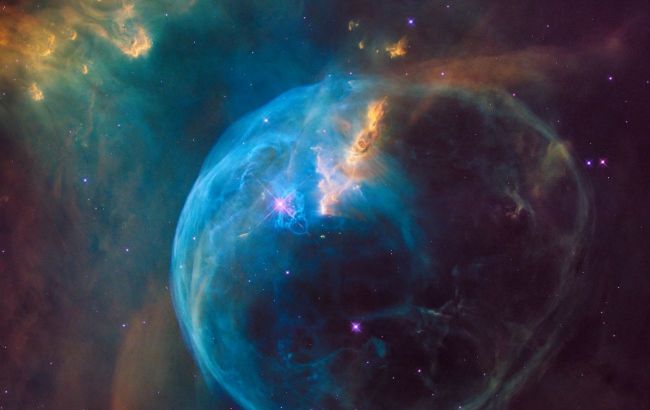Supernova explosion: Detailed photo
 NASA revealed a photo of a star explosion in a neighboring galaxy (photo: Unsplash)
NASA revealed a photo of a star explosion in a neighboring galaxy (photo: Unsplash)
NASA, in collaboration with the Japan Aerospace Exploration Agency (JAXA), has unveiled a detailed X-ray image of a star explosion in the distant reaches of space. This significant advancement in research was achieved using the XRISM space observatory, aimed at studying the hottest regions of the Universe, according to the technology, science, and space news website TweakTown.
Located at a distance of 160,000 light-years from Earth, this object belongs to the Large Magellanic Cloud, a dwarf galaxy that is a neighbor to our Milky Way galaxy.
Using XRISM instruments, scientists conducted a thorough investigation of N132D and determined that the star depleted its energy resources approximately 3,000 years ago, leading to a powerful supernova explosion. The consequences of this explosion remain visible to this day.
Of particular interest is the analysis of XRISM data, which allowed scientists to determine the elemental composition of the remnants of the supernova. These remnants were formed inside the star and ejected at the moment of its explosion.

N132D, which became a supernova (photo: Gizmodo)
Brian Williams, a scientific collaborator on the XRISM project at NASA, emphasized the significance of this discovery: "Resolve will allow us to see the shapes of these lines in a way never possible before, letting us determine not only the abundances of the various elements present, but also their temperatures, densities, and directions of motion at unprecedented levels of precision."
He added that this information can be compiled to gather insights into the original star and its explosion.

The most detailed X-ray spectrum of N132D ever created (photo: XRISM)
The research conducted using XRISM is of significant importance for understanding cosmic processes. This discovery marks a crucial step in expanding our knowledge of the universe and exploring the processes of elemental formation, which are the foundation of the entire cosmic structure.
Earlier, we wrote that NASA presented a unique photo of a stellar explosion.
You can also read about how a day passes on Mars.

